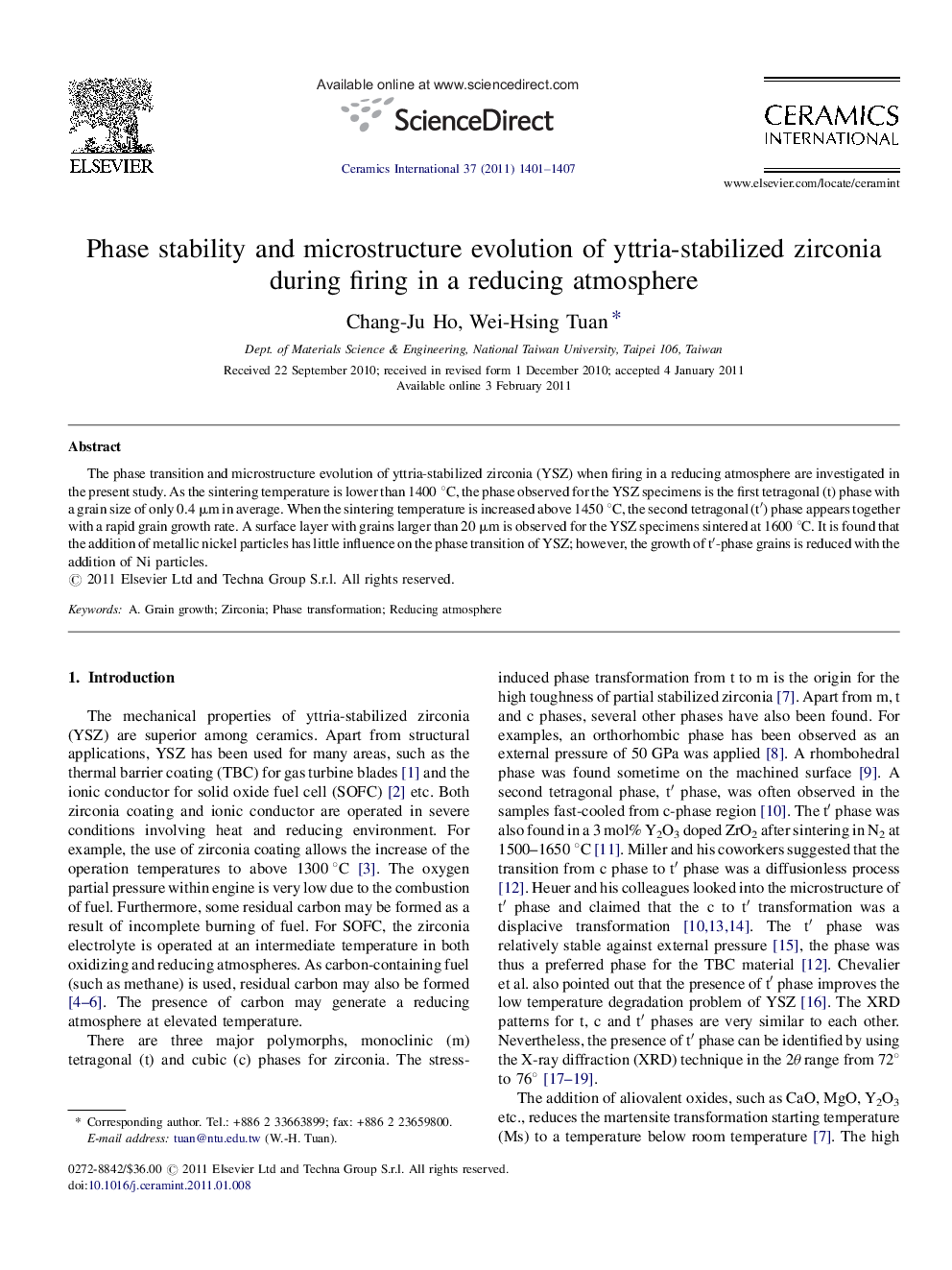| Article ID | Journal | Published Year | Pages | File Type |
|---|---|---|---|---|
| 10626417 | Ceramics International | 2011 | 7 Pages |
Abstract
The phase transition and microstructure evolution of yttria-stabilized zirconia (YSZ) when firing in a reducing atmosphere are investigated in the present study. As the sintering temperature is lower than 1400 °C, the phase observed for the YSZ specimens is the first tetragonal (t) phase with a grain size of only 0.4 μm in average. When the sintering temperature is increased above 1450 °C, the second tetragonal (tâ²) phase appears together with a rapid grain growth rate. A surface layer with grains larger than 20 μm is observed for the YSZ specimens sintered at 1600 °C. It is found that the addition of metallic nickel particles has little influence on the phase transition of YSZ; however, the growth of tâ²-phase grains is reduced with the addition of Ni particles.
Related Topics
Physical Sciences and Engineering
Materials Science
Ceramics and Composites
Authors
Chang-Ju Ho, Wei-Hsing Tuan,
